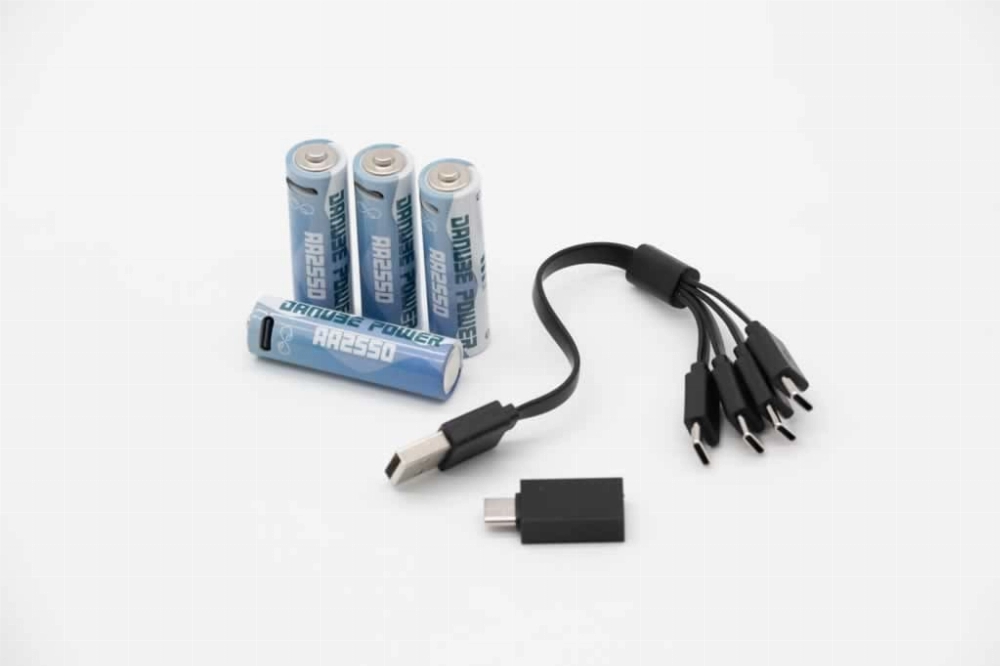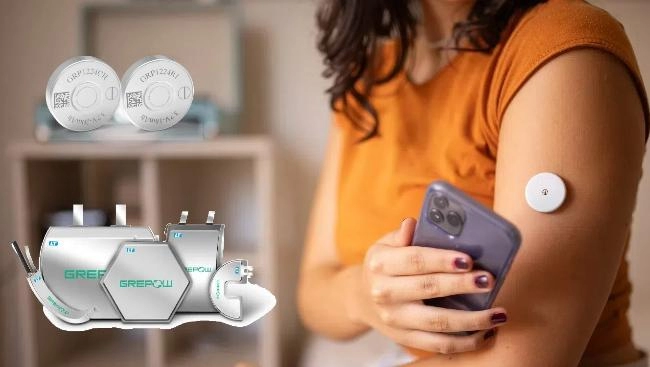Extending the Life of Rechargeable AA Batteries
Rechargeable AA batteries are a common choice for powering a variety of devices, from remote controls to digital cameras. Understanding their lifespan and influencing factors is crucial for consumers aiming to maximize their investment. In this article, we will explore the different types of rechargeable AA batteries, the factors that influence their lifespan, and how to extend their usage.
Part 1. Types of Rechargeable AA Batteries
Rechargeable AA batteries come in several chemical types, with Nickel-Metal Hydride (NiMH) and Lithium being the most common.
NiMH Batteries
NiMH batteries are widely used because they can be recharged multiple times, typically between 500 and 1000 cycles. They have a nominal voltage of 1.2V, providing a stable power supply, making them well-suited for high-drain devices like digital cameras and game controllers. NiMH batteries also come in low self-discharge versions, which can hold their charge for longer periods when not in use.
Lithium Batteries
Lithium rechargeable batteries often have a higher voltage of 1.5V and are known for their long storage life and low self-discharge rate. They can hold their charge for extended periods, even when not in use. Lithium batteries are often preferred for devices that need a sustained power supply over long durations, offering users a reliable energy source. For more information on how to get the most out of your lithium batteries, check out the correct use method of lithium batteries.
Both NiMH and Lithium rechargeable AA batteries offer unique advantages and are suitable for different device types and usage patterns.
Part 2. Factors Affecting the Lifespan of Rechargeable AA Batteries
The lifespan of rechargeable AA batteries can vary based on several factors:
Battery Quality
High-quality batteries from trusted brands like Eneloop or Energizer tend to last longer than generic ones. Investing in reputable brands often ensures better performance and a longer lifespan, which can save you money in the long run.
Usage Patterns
The frequency and manner of use significantly impacts battery lifespan.
High-drain devices, such as digital cameras, will deplete batteries more quickly than low-drain devices like remote controls or wall clocks. Understanding how your devices use power will help you choose the right type of battery for optimal performance.
Charging Habits
Proper charging is essential to maximize battery life. Overcharging or using incompatible chargers can damage the battery and reduce its lifespan. Always adhere to the manufacturer’s charging instructions to ensure your batteries maintain good performance for longer.
Storage Conditions
Storing batteries in extreme temperatures can shorten their lifespan. To maintain battery health, store them in a cool, dry place away from direct sunlight and at room temperature to ensure optimal working condition.
Part 3. Average Lifespan of Rechargeable AA Batteries
The average lifespan of rechargeable AA batteries can range from 2 to 10 years, depending on usage and storage conditions.
- Low Usage: If batteries are not used frequently and are stored properly, they may last closer to the upper end of this range. For example, when used in a remote control that is rarely used, the batteries could last for several years.
- High Usage: On the other hand, when used in high-drain devices like digital cameras or game controllers, their lifespan may be closer to the lower end of this range. High-drain devices will deplete the battery more quickly.
Part 4. How Many Times Can You Recharge Them?
The number of recharge cycles varies depending on the battery type:
- NiMH Batteries: These batteries can typically handle 500 to 1000 charge cycles under normal use. Charging an NiMH battery once a week could potentially provide 10 to 20 years of use before requiring replacement.
- Lithium Batteries: Lithium batteries can withstand over 1000 charge cycles. Their advanced technology and low self-discharge rate make them ideal for users who want long-lasting power without frequent replacements.
With proper care, you can expect years of reliable performance from your rechargeable AA batteries.
Part 5. Tips to Maximize Rechargeable AA Battery Life
To optimize your rechargeable AA batteries, follow these helpful tips:
Use a Smart Charger
Invest in a high-quality charger that automatically regulates the charging process to avoid overcharging and extend battery life.
Avoid Extreme Temperatures
Keep batteries in a cool, dry environment. Storing them in extremely hot or cold conditions can shorten their lifespan and reduce their effectiveness.
Charge Properly
Always follow the manufacturer’s recommendations when charging to ensure battery longevity.
Following these best practices will significantly extend the life of your rechargeable AA batteries, providing a long-lasting and efficient power source for all your devices.
A Comprehensive Guide to Rechargeable AA Batteries
Rechargeable AA batteries are a popular choice for a wide range of devices, offering an economical, efficient, and environmentally friendly solution. Here, we will explore the essential aspects of rechargeable AA batteries, including their types, benefits, and maintenance.
Part 1. What are Rechargeable AA Batteries?
Rechargeable AA batteries are designed to be used multiple times. Unlike disposable alkaline batteries, these batteries can be recharged once they are depleted, making them a sustainable and cost-effective choice for users.
Types of Rechargeable AA Batteries
There are primarily three types of rechargeable AA batteries:
- Nickel-Metal Hydride (NiMH): The most common type, offering a good balance between capacity, performance, and cost.
- Nickel-Cadmium (NiCd): Known for their durability, but they have lower capacity compared to NiMH and are prone to the memory effect.
- Lithium-Ion (Li-ion): They offer high energy density and long lifespan but require specific chargers and are more expensive.
Part 2. Advantages of Using Rechargeable AA Batteries
Rechargeable AA batteries offer several advantages over disposable batteries:
- Cost-Effective: They can be used hundreds or even thousands of times, saving you money in the long run, but the initial purchase price is higher.
- Environmentally Friendly: By reducing waste, rechargeable batteries contribute to a cleaner environment. They can be reused and, in most cases, recycled, helping to reduce environmental impact.
- Consistency: Rechargeable batteries can provide a stable power output over time, especially in high-drain devices, unlike alkaline batteries, which may experience a drop in power as they deplete.
Part 3. How to Properly Charge Rechargeable AA Batteries
To maximize the lifespan and performance of your rechargeable AA batteries, proper charging is essential. Here are some basic tips:
- Avoid Overcharging: Choose chargers with automatic shut-off features to prevent overcharging, which can damage the batteries.
- Avoid Deep Discharging: Try not to let the batteries fully discharge. Charge them when they reach around 20% to maintain battery health.
- Regular Maintenance: If not used frequently, charge the batteries every few months to prevent them from entering a deep discharge state.
- Rotate Your Batteries: If you have multiple sets of rechargeable batteries, alternate their usage to ensure even wear and prevent uneven degradation.
Part 4. Common Misconceptions About Rechargeable Batteries
There are some misconceptions about rechargeable AA batteries that need clarification:
- They Don’t Last as Long as Alkaline Batteries: While alkaline batteries have a higher initial voltage, rechargeable NiMH batteries offer consistent performance, especially in high-drain devices.
- They Suffer from the Memory Effect: This was an issue with early NiCd batteries, but it is not a problem with modern NiMH or Lithium-ion batteries. The memory effect doesn’t significantly affect performance in most cases.
Part 5. Environmental Impact of Rechargeable Batteries
Rechargeable AA batteries have a more positive environmental impact compared to disposable alternatives:
- Reduced Waste: Rechargeable batteries help to reduce waste, making them a sustainable choice for consumers concerned about waste management.
- Recyclability: Most rechargeable batteries can be recycled at designated facilities, minimizing environmental harm. Proper disposal ensures that harmful chemicals don’t end up in landfills and other similar environments.
Part 6. Signs You Need to Replace Rechargeable AA Batteries
Here are some indicators that your rechargeable AA batteries may need replacing:
- Decreased Capacity: If your devices don’t last as long on a single charge as they used to, it may be time to replace the batteries.
- Physical Damage: Any signs of swelling or leakage in the batteries should prompt an immediate replacement to avoid damaging your devices.
Battery Cleaning Guide: Step-by-Step Instructions
This guide provides a detailed, step-by-step process on how to safely clean the terminals of leaking batteries. It includes important safety tips, potential risks, and best practices for handling this situation.
Portable Chargers vs. Power Banks: What’s the Difference?
A ‘portable charger’ is a general term for any mobile charging device, while a power bank stores electrical energy in its own battery and can charge devices without an external power source.
The Ultimate Guide to Lithium-Ion Jump Starters
Lithium-ion jump starters are essential tools for automotive emergencies. This guide will cover its uses, maintenance, and safety precautions, and explain why investing in one is a wise decision.
What is a Portable Charger?
A portable charger is a device that keeps your electronic devices powered on the go. This guide will provide a detailed analysis of its definition, components, and working principles to help you understand it thoroughly.
Choosing the Right Battery Pack: Capacity, Performance, and Other Factors
Selecting the right battery pack is crucial for reliable performance. This guide covers important factors such as capacity and safety to help you make an informed choice.








